Can I use someone else’s car on the rally?
Yes you can. As long as you have a copy of the original Vehicle Registration document, we can make up a ‘Letter of Authority to Drive’ which you can show to Customs officials and Police Officers when overseas.
Why can we only take a maximum of 4 drivers in each car?
Keeping the weight of your vehicle down is key to successfully negotiating the Sahara Desert. Adding an additional driver not only adds their personal weight, but that of their clothing & equipment, plus extra water, food and tents. Not only this, but the room inside all but the largest 4×4 vehicles is quite limited and it just wouldn’t be a comfortable experience for them.
We would recommend the following team numbers…
Small 4x4
No more than 2 drivers Suzuki Jimny, RAV4 (3-door) Terrano (3-door) etc
Medium 4x4
No more than 3 drivers Freelander 1, Honda CRV, RAV4 (5 door) etc
Large 4x4
No more than 4 drivers Land Cruiser, Patrol, Shogun, Discovery, Defender etc
Can I undertake the expedition alone?
Unfortunately not. If we have problems, there may be some long days on the road and we have found it is too much driving for just one person. It is much better to have at least one other person to share time behind the wheel to ensure your own safety and that of the team and other road users. We’ve found that a medium or large sized 4x4 with 3 drivers is the best combination and this is what we had when we beat the record for the fastest drive from London to Cape Town - 10,000 miles through 23 countries in just 11 days!
Where will we be sleeping?
Accommodation will primarily be at campsites, but in many overnight stops there will be the option to upgrade to a hostel (auberge) or hotel room. This will be on a first come first serve basis, but to avoid having uncomfortable night’s sleep, it is best to bring a good quality sleeping bag and mat.
Your first night’s accommodation as part of your entry fee is in Los Barrios, southern Spain, just a short 20 minute drive from Gibraltar, whilst the last night will be in a hotel in Morocco.
For those teams joining us from the UK, the first 2 nights will be onboard the ferry, whilst the 3rd night we’ll be staying in a hotel near Seville on the way down to Gibraltar. On the way back home through Spain we’ll be staying at a hotel near Seville again, followed by one near Palencia in the north of the country.
Are there any rest days on the rally?
From leaving Portsmouth on the Thursday evening, you’ll have a 36 hour (2 night) ferry crossing to Santander in northern Spain. This will give you time to wind down from the hectic pre-expedition preparation whilst getting to know the support crew and your other team members.
The first Sunday will be a short driving day from Seville to Gibraltar and whilst our mechanics give your vehicles a quick once-over, you can relax in town or take an organised tour of ‘The Rock’.
Until we board the ferry for the return journey to the UK, there are no other planned rest days, but as this is a vehicle expedition we must retain a flexible approach to the itinerary. If we encounter mechanical problems during our first venture into the Sahara, we have the option to stay in the town of Zagora for 24 hours to affect repairs. For those that have serviceable vehicles though, this will give you the chance to sit back and relax, or wander through the streets of this vibrant oasis.
Where is the best place to find a used Freelander 1?
In order of preference, we would suggest the following online resources to find a suitable Freelander 1 in terms of the numbers available to choose from and the most reasonable prices…
- Facebook Marketplace https://www.facebook.com/marketplace
- Autotrader https://www.autotrader.co.uk
- eBay https://www.ebay.co.uk
- Gumtree https://www.gumtree.com
- Preloved https://www.preloved.co.uk
- Freeads https://www.freeads.co.uk
- Parkers https://www.parkers.co.uk
- Exchange & Mart https://www.exchangeandmart.co.uk
Don’t forget your local papers and used car dealerships as well.
How many teams will be on the expedition?
For this event, we are capping the number of entries at 18 teams. This equates to approximately 40 people as teams tend to opt for 2 or 3 drivers per car.
What skills do the support crew have on the expedition?
Expedition Leader
25 years experience of operating vehicles in the most extreme conditions found on earth. From -60C Siberia to +50C of the Taklamakan Desert, through dense jungles and up to 18,500 feet above sea level high in the Himalayas.
Expedition Doctor
Experienced GP and A&E doctor specialising in remote wilderness medicine
Expedition Mechanic
Military vehicle mechanic, highly skilled in ‘Battle Damage Repairs’ when operating far from help and under extreme pressure.
Media specialist
Freelance filmmaker & photographer with expedition experience
What is the ratio of support crew to teams taking part?
We aim for 1 support vehicle and 2 support crew for every 6 teams taking part in the expedition.
Do we drive in a convoy or travel independently?
Each team will be provided with a copy of the route that they can use to navigate from on their smartphone. In order to do this it simply involves downloading a free App onto your phone called Maps.me. As modern smartphones are GPS enabled, this means you won’t be using up any of your mobile data and will provide accurate route and location information even when you are far from a mobile phone signal.
On the tarmac sections, this will allow teams to travel independently, with the support crew following up the rear to recover anyone who has problems. If teams wish to stay close to the support vehicles though, that will be fine.
For the desert sections though, we’ll need to stay pretty tight as getting all but the most capable 4x4 along the original Dakar Rally route will not be easy and it will be a team effort to get through! Even those Toyota Land Cruisers are always safer to drive in a group in case of getting stuck or mechanical breakdown.
Why are the ferries to and from the UK not included in the entry fee?
We considered including them in the entry fee, but there were 4 main reasons why this wouldn’t work:
- The cost of the ferries is based on the size of the vehicles and the number of passengers inside them. If we included it in the entry fee, to cover our costs, we would have to assume that every team was driving a large 4×4 with roof rack fitted and consisted of 4 team members. This would unfairly penalise the smaller 4x4’s with just 2 drivers.
- For those teams on a budget, there is the option of taking a cheaper ferry crossing from Dover to Calais and then using the toll free roads through France to get to Spain.
- Teams joining us on the rally may live on the continent and so the ferries are not needed by them.
- Some teams with time in hand may wish to take a more leisurely drive down to southern Spain and back.
If we wanted to save money and drive through France on the toll free roads, which way would we go?
The following website lists the best way to get through France toll free and without adding too much time compared to using the toll motorways:
https://about-france.com/tourism/no-tolls-routes.htm
What is the saving by taking the cheaper ferry and toll free roads through France?
Approximately £300
This is based on taking the ferry or Eurotunnel from the UK to France and then using the toll free roads through France, compared to taking the Portsmouth to Santander ferry. This does though include a night in a hotel on the way down which is approximately £80 for 2 people sharing a twin room.
How much time to we have to get from the ferry port in Santander to Gibraltar?
1.5 days
The distance of 640 miles according to Google Maps will take 10 hours of driving at an average speed of 64mph.
This route is primarily on fast motorways and dual carriageways, but unlike the UK with its heavily congested roads, those in Spain are largely devoid of traffic and actually enjoyable to drive. The plan would be as follows:
The plan would be as follows…
Santander to Seville - 515 miles / 7:45 hours
Seville to Gibraltar - 125 miles / 2:15 hours
For slower vehicles and allowing for lunch / wee stops, you should expect to factor in an additional 2 to 3 hours on the Santander to Seville leg.
How much time do we have to get from Seville to Santander for the ferry back to Portsmouth?
1.5 days.
We’ll take the same route home as we did on the way down as this is the quickest and easiest option. The distance of 515 miles, according to Google Maps is estimated to take 8 hours of driving at an average speed of 65mph.
The plan would be as follows…
Seville to Palencia - 390 miles / 5:45 hours
Palencia to Santander - 125 miles / 2:15 hours
For slower vehicles and allowing for lunch / wee stops, you should expect to factor in an additional 2 hours on the Seville to Palencia leg.

